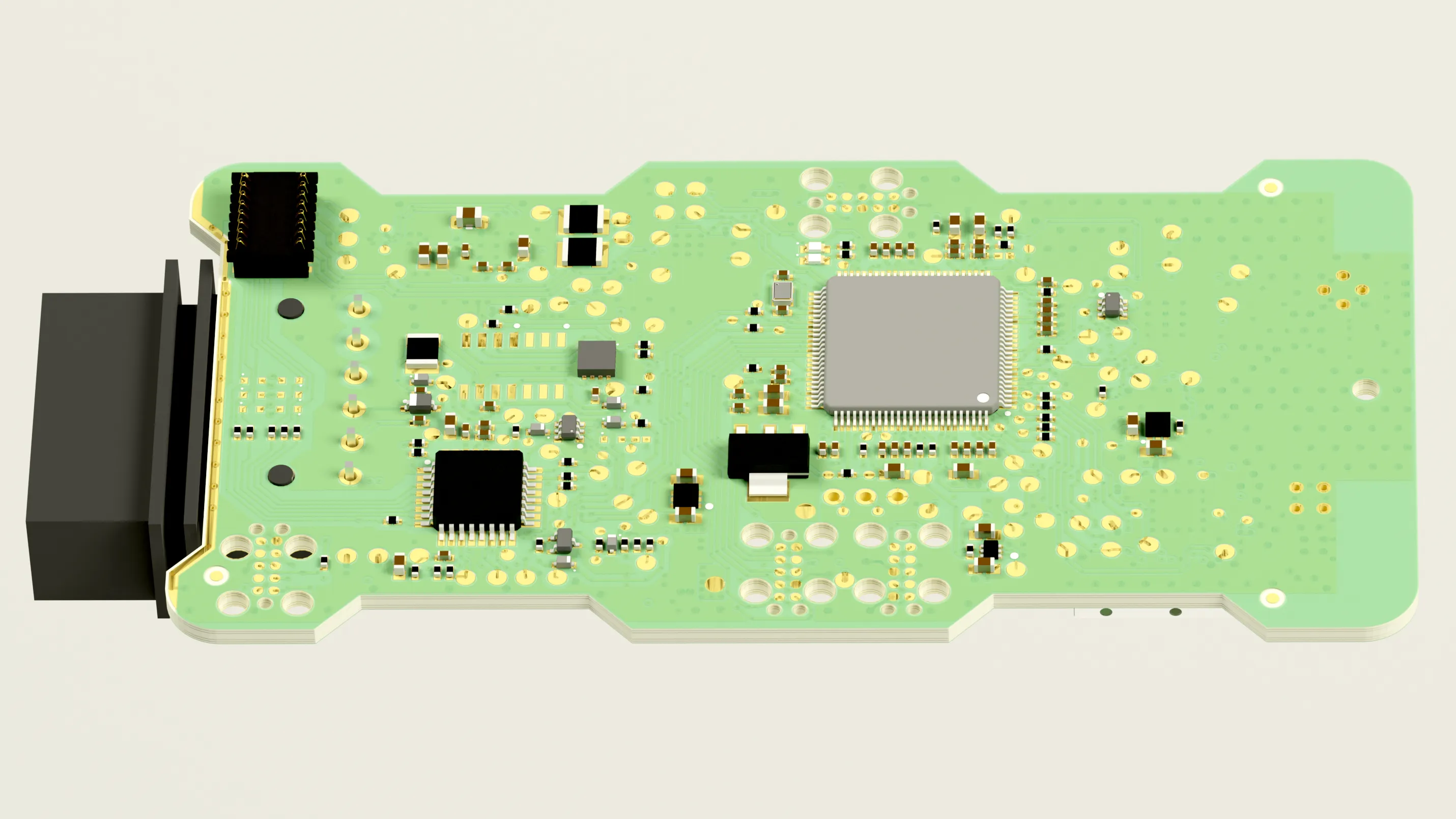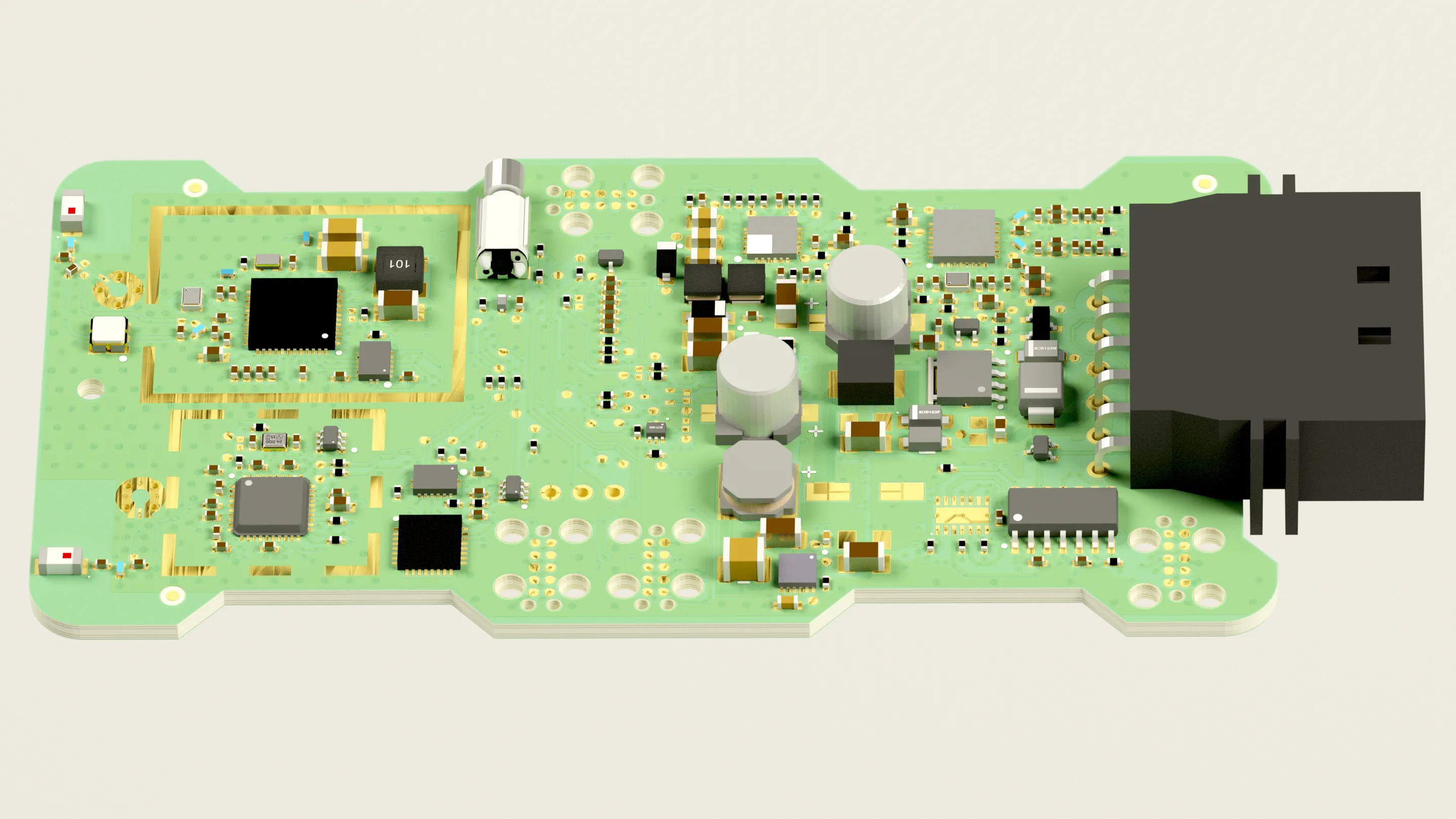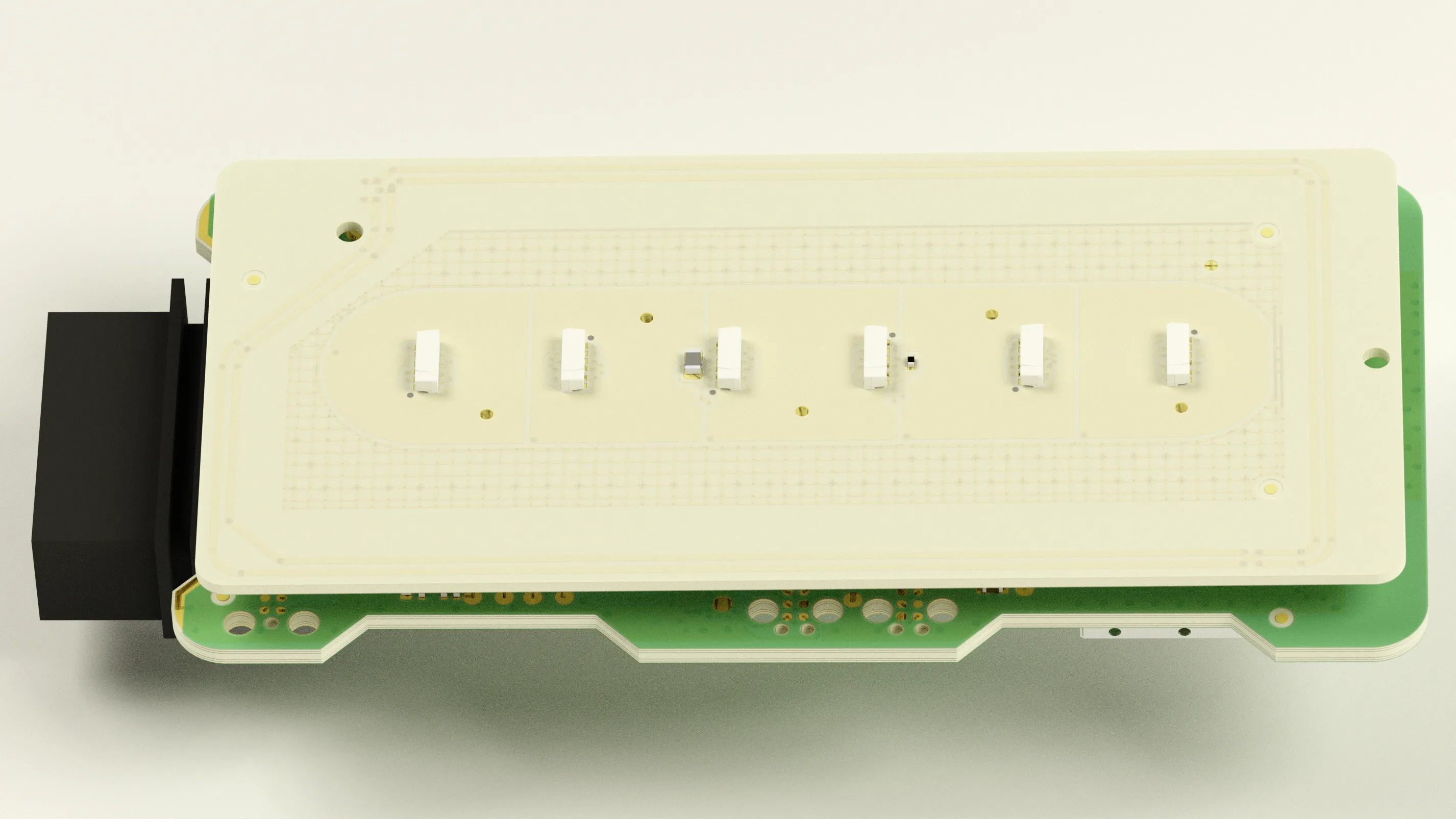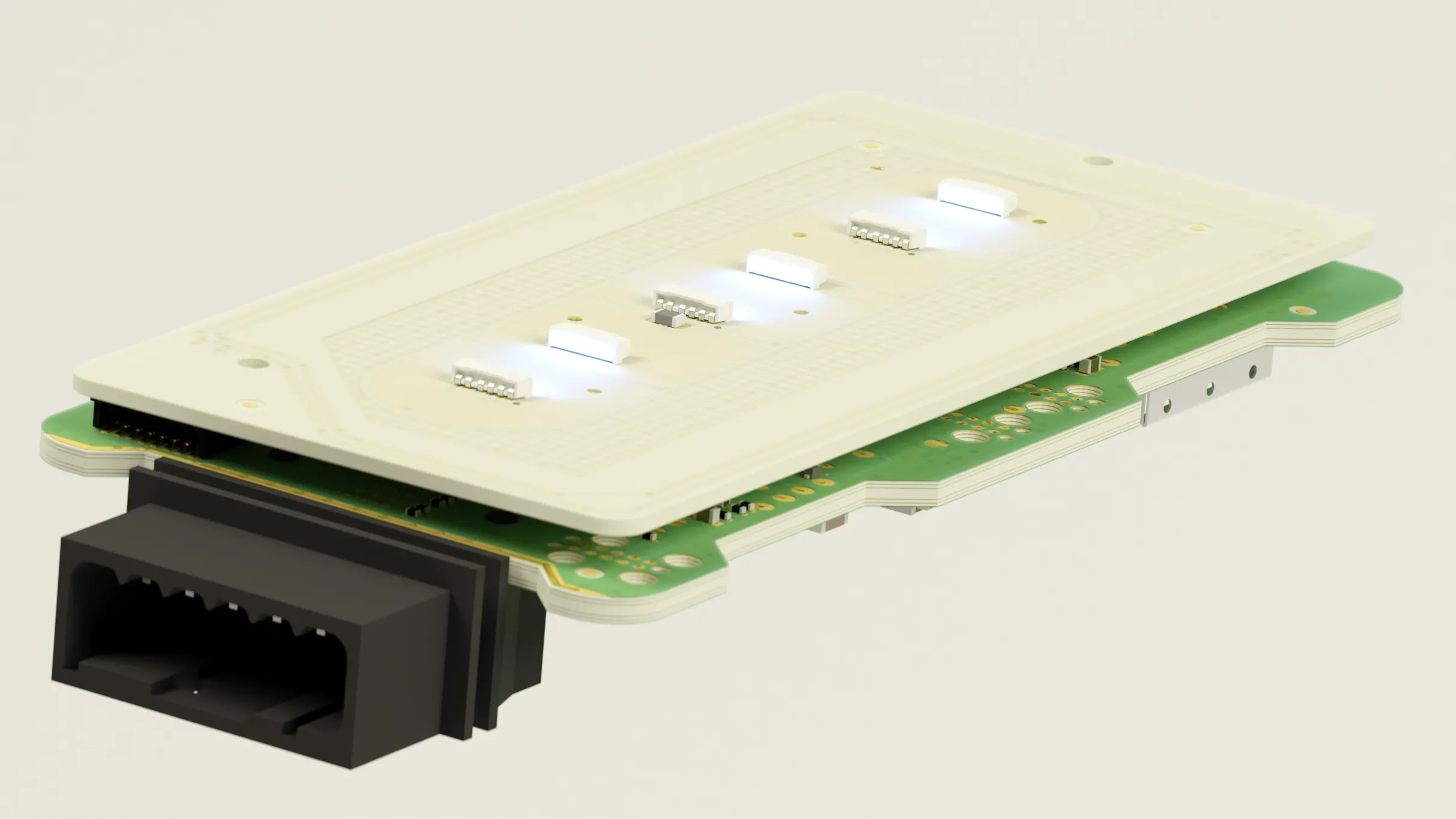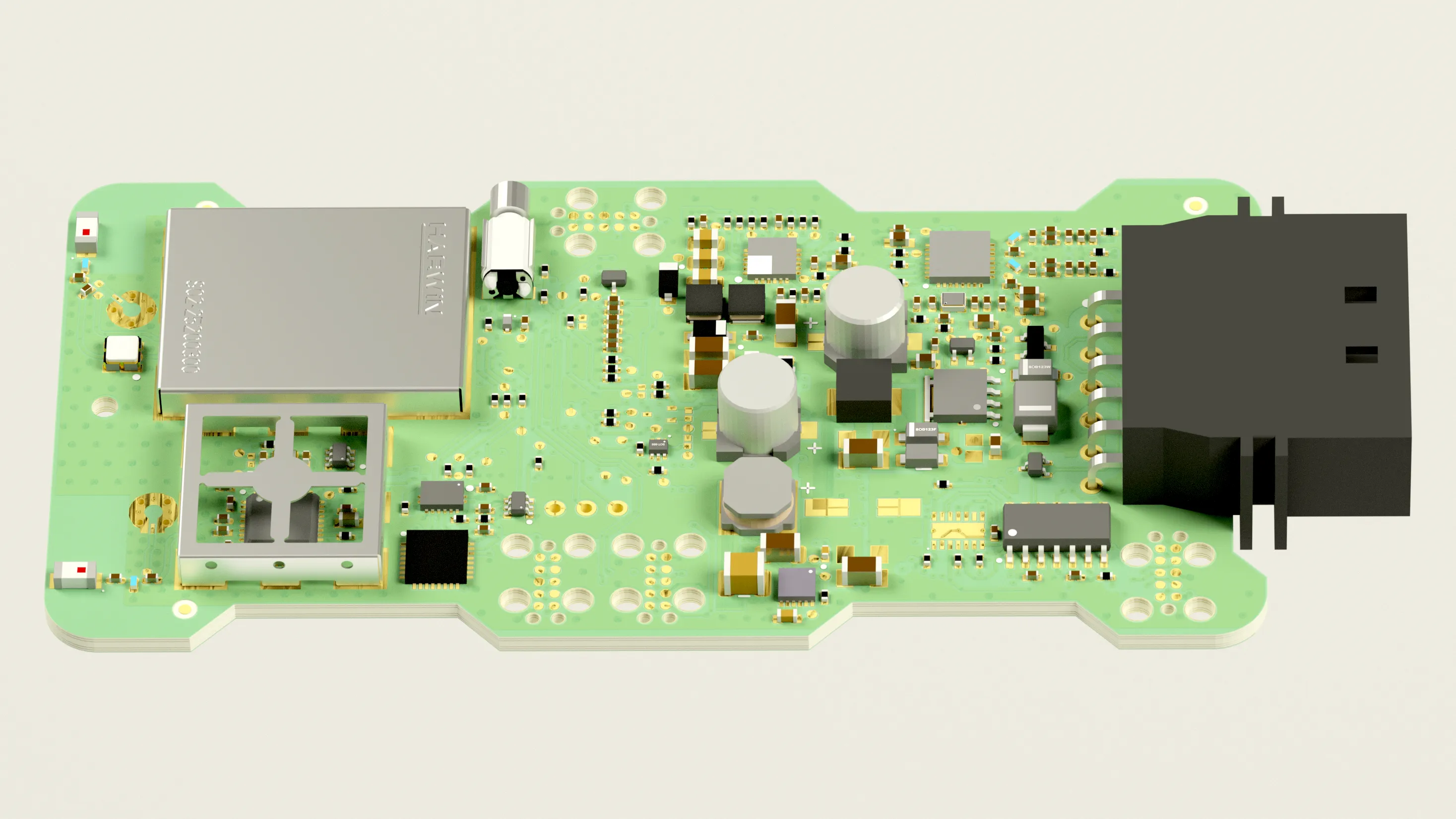
Overview
This project features a secure CCC v3.0 Digital Key gateway ECU combined with a capacitive sensor door button that offers haptic feedback, LED indication, and extensive connectivity.
Designed to merge human-machine interaction with secure wireless vehicle access, this device supports customizable user input and indication scenarios, advanced security protocols for digital key communication, and EMVCo compatibility, enabling wireless bank card payments with the appropriate software support.
Designed to combine Human to Machine Interfacing with a wireless vehicle access with high-level security, this device supports user physical input with a customizable indication and a wide range of security protocols for communication with digital keys. Also, this device is compatible with the EMVCo standard and thus is able (with an appropriate software support) to accept wireless bank card payments.
The device utilizes Ultra-Wideband (UWB) radio to measure the distance to the digital key (KeyFob). When three such devices are installed in a vehicle, full real-time digital key position tracking becomes possible, unlocking advanced security and convenience features, such as:
- Allowing the vehicle to start only if the key is inside
- Automatically unlocking the door closest to the driver
- Activating cargo compartment lights when the driver approaches
Key Features
- BLE 5.0 and UWB for wireless communication with the digital key (up to 50 meters)
- NFC (ISO14443A, ISO14443B 106 kbps) as a backup communication channel with the KeyFob (in case of a dead battery) and for wireless EMVCo payments
- Secure Element (Java Card)
- CAN/CAN-FD (up to 5 Mbit/s) for communication with the vehicle controller
- LIN interface for additional interior buttons or touch sensors
- Capacitive touch sensor on the front panel, supporting slider gestures
- High-brightness RGB LED indication (up to 1000 cd/m²) for visibility in direct sunlight
- Haptic feedback for touch events
- Fully operational in -40 … +85 °C ambient temperatures, even under heavy solar load
- IP6K9K protection rating when mounted in the vehicle, IP6K5K standalone
- Low Power features:
- Ultra-low quiescent current primary power converter
- Multiple power domains for selective activation in low-power states
- CAN/CAN-FD partitioned networking with wake-up only on specific CAN messages (i.e., directly addressed)
- LIN wake-up capability
- RF scanning for KeyFob with average LV battery consumption below 1 mA
My Contribution to the Project
As part of this project, my responsibilities included:
- Requirements engineering (initially using Requirements Yogi in Confluence, later migrated to Siemens Polarion)
- Managing the Siemens Teamcenter project
- Developing the solution architecture
- Developing the Hardware-Software Interface (HSI)
- Leading DFMEA analysis
- Performing Simulations (LTSpice, GNU Octave, Python, PDN Analyzer, Signal Integrity, MWO)
- Schematics and PCB design in Altium Nexus (an Altium Designer-based PLM)
- Design for Manufacturing (DFM) and industrialization
- Developing validation and verification workflows
- Bring-Up and Antenna Tuning
- Supporting FCC and ECE R10 certification process
- Reverse-engineering and analyzing the capacitive touch sensor library to implement a more robust noise filtering solution (initial binary library kept unmodified)
- Developing a MISRA C compliant driver for the LED controller chip
- Writing Python scripts and GUI tools to support bring-up and validation activities
Project Challenges
1. Semiconductor Shortages and Component Sourcing
The project began just as the global semiconductor shortages were escalating, making it incredibly difficult to source critical components in time. This required significant architectural adjustments and BOM flexibility, including designing the PCB to support multiple package options for key components.
2. Indication
One of the biggest challenges was ensuring uniform brightness and visual clarity of the LED indication while fitting within a strict z-axis enclosure constraint. Achieving this balance required extensive design iterations, simulations, and prototyping. Once an optimal solution was found, further refinements were made to ensure cost-efficiency and suitability for mass production.
3. Capacitive Touch Sensing in a Noisy EV Environment
Integrating a capacitive touch sensor into a high-EMI EV environment while maintaining clear visual indication proved challenging. To improve performance, I reverse-engineered the existing binary-only touch sensing library and implemented custom noise filtering for raw sensor readings.
Another major hurdle was ensuring the touch button remained unaffected by water. After extensive sensor design experiments, we adopted a segmented sensor layout and developed a custom active shield signal generation (initially, the built-in active shield support in the library introduced excessive jitter due to an MCU hardware bug, which required a tailored hardware-software solution to resolve).
4. ESD, RF, and Conducted Interference Immunity
The most demanding challenge was meeting strict ESD, RF, and conducted interference immunity requirements. Fortunately, all issues were successfully addressed using cost-effective and simple measures:
- UWB: A shielding can (added to the PCB footprint in advance as a precaution)
- Bluetooth: A SAW filter and an alternate antenna design
- Touch sensor: A combination of series resistors and intelligent software noise filtering
These solutions ensured compliance with stringent EMC standards while keeping production costs under control.
Product Images
